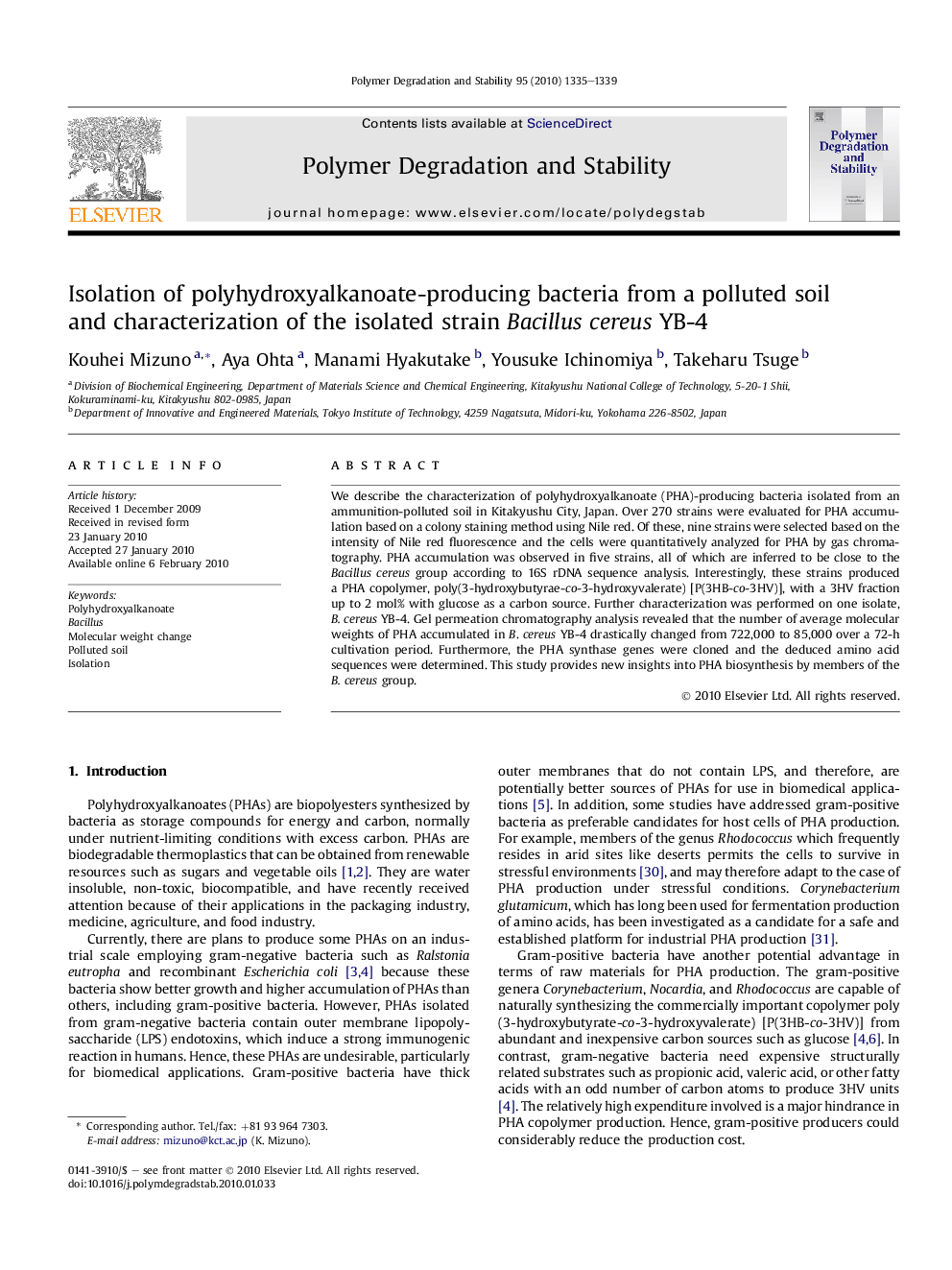| Article ID | Journal | Published Year | Pages | File Type |
|---|---|---|---|---|
| 5203376 | Polymer Degradation and Stability | 2010 | 5 Pages |
Abstract
We describe the characterization of polyhydroxyalkanoate (PHA)-producing bacteria isolated from an ammunition-polluted soil in Kitakyushu City, Japan. Over 270 strains were evaluated for PHA accumulation based on a colony staining method using Nile red. Of these, nine strains were selected based on the intensity of Nile red fluorescence and the cells were quantitatively analyzed for PHA by gas chromatography. PHA accumulation was observed in five strains, all of which are inferred to be close to the Bacillus cereus group according to 16S rDNA sequence analysis. Interestingly, these strains produced a PHA copolymer, poly(3-hydroxybutyrae-co-3-hydroxyvalerate) [P(3HB-co-3HV)], with a 3HV fraction up to 2 mol% with glucose as a carbon source. Further characterization was performed on one isolate, B. cereus YB-4. Gel permeation chromatography analysis revealed that the number of average molecular weights of PHA accumulated in B. cereus YB-4 drastically changed from 722,000 to 85,000 over a 72-h cultivation period. Furthermore, the PHA synthase genes were cloned and the deduced amino acid sequences were determined. This study provides new insights into PHA biosynthesis by members of the B. cereus group.
Related Topics
Physical Sciences and Engineering
Chemistry
Organic Chemistry
Authors
Kouhei Mizuno, Aya Ohta, Manami Hyakutake, Yousuke Ichinomiya, Takeharu Tsuge,
